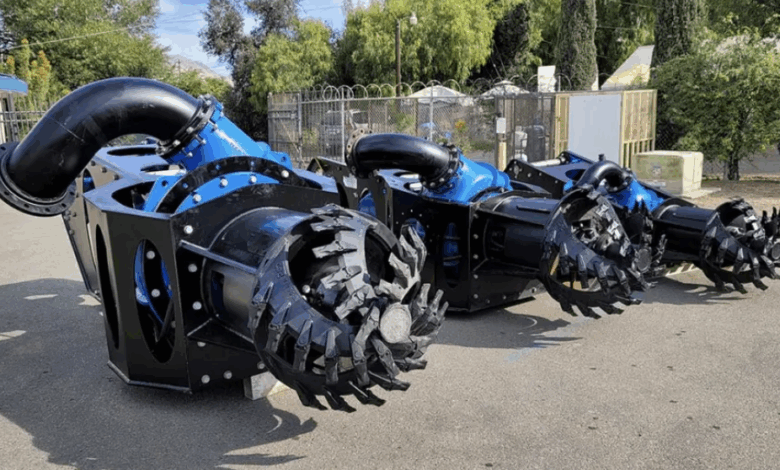
Introduction
The industrial landscape is changing rapidly, and one of the key drivers of this transformation is artificial intelligence (AI). From automating decision-making to enhancing operational safety, AI is being introduced into industries that once relied solely on heavy machinery and manual expertise. In dredging operations, large-scale industrial projects, and the integration of advanced pumping systems, AI is showing promise in reshaping efficiency and sustainability. Among these developments, the role of the Slurry Pump stands out as essential for future operations.
AI in Modern Dredging Operations
Dredging has always been a demanding task, involving the removal of sediments, debris, and slurry to maintain waterways, ports, and reservoirs. Traditionally, this process relied on mechanical dredges and pumps operated by teams of skilled workers. However, AI is now being integrated into dredging systems to provide predictive maintenance, real-time monitoring, and automation of operations.
By combining AI algorithms with dredging machinery, operators can better anticipate equipment wear and optimize pumping flow. This reduces downtime and increases overall efficiency. Companies like EDDY Pump are already advancing solutions that connect traditional dredging equipment with AI-driven dredging systems, allowing for safer and more effective removal of sediment and slurry.
The Role of Slurry Pump Systems in Industry
Across industries, the Slurry Pump remains a critical component for handling abrasive mixtures of solids and liquids. In mining, construction, wastewater management, and dredging, these pumps move material that other equipment cannot manage effectively. Their ability to handle high-viscosity and abrasive content makes them indispensable in challenging environments.
AI integration adds another layer of performance to these systems. By equipping the Slurry Pump with sensors and monitoring technology, operators can analyze performance in real time. This helps in adjusting speed, flow, and pressure for optimal results, reducing the risk of clogging and mechanical failure. With forward-looking companies such as EDDY Pump offering durable and adaptable solutions, smart industrial pumping solutions are shaping the future of industrial fluid handling.
AI’s Contribution to Industrial Projects
Large-scale industrial projects depend on precision and efficiency. From infrastructure development to resource extraction, delays caused by pump failures or inefficiencies can result in significant cost overruns. AI-driven monitoring tools are now being applied to predict pump maintenance needs before failures occur.
For example, sensors within a Slurry Pump can send continuous performance data to AI systems that identify early warning signs of wear or imbalance. This predictive capability reduces downtime and helps industries maintain strict project timelines. In addition, AI allows for smarter allocation of energy use, ensuring that pumps and dredging equipment consume only what is necessary, reducing operational costs and environmental impact. This is particularly evident in automated slurry handling, which ensures consistent efficiency with minimal manual oversight.
Enhancing Environmental Sustainability
Environmental considerations are becoming increasingly important in dredging and industrial operations. AI technology is helping reduce ecological impact by ensuring that only the required amount of material is removed, minimizing disturbance to aquatic habitats. Similarly, in wastewater treatment plants, AI-controlled Slurry Pump systems can regulate flow rates to ensure consistent processing while preventing overloading.
EDDY Pump has emphasized the importance of designing equipment that not only performs in tough conditions but also aligns with environmental priorities. When combined with AI tools and AI-driven dredging systems, these pumps provide industries with sustainable solutions for the future.
Safety and Workforce Support
AI is not only about machinery but also about improving worker safety. In dredging operations, where conditions can be unpredictable, AI helps reduce direct human exposure by automating repetitive tasks. Remote monitoring of pump performance means fewer personnel are needed on-site in hazardous conditions.
For industries that rely heavily on the Slurry Pump, this shift reduces risks associated with maintenance and manual intervention. With automated slurry handling and smart industrial pumping solutions powered by AI, industries can train their workforce to focus on supervision and decision-making rather than dangerous physical tasks.
The Future of AI in Dredging and Pumping
The integration of AI into dredging, industrial projects, and Slurry Pump systems is still developing, but its potential is undeniable. From predictive maintenance and operational efficiency to environmental protection and worker safety, AI is redefining how industries operate.
Companies such as EDDY Pump are contributing to this transition by providing durable pumping systems ready to adapt to smart technology integration. Their focus on efficiency, durability, and performance ensures that as AI advances, the pumps and dredging systems they deliver will remain relevant for future needs.
Conclusion
AI is no longer just a concept for the future—it is already shaping how industries work today. In dredging, industrial projects, and pump systems, its impact is becoming more visible with each advancement. The Slurry Pump, central to many of these operations, is evolving through AI-enabled performance monitoring and predictive maintenance. With innovators like EDDY Pump leading the way and technologies such as AI-driven dredging systems, automated slurry handling, and smart industrial pumping solutions, the next era of industrial projects will be defined by greater efficiency, safety, and sustainability.





